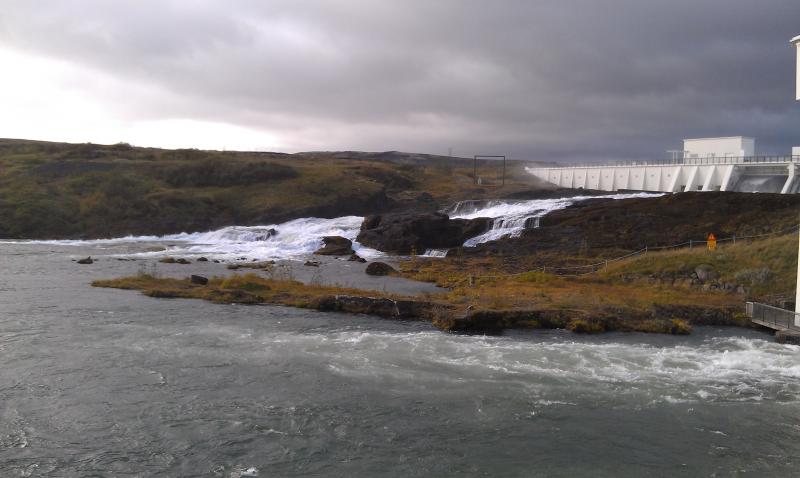Iceland: Gearing Up To Supply The World With Green IT Solutions
Last week I had the pleasure of visiting the remote and beautiful country of Iceland. After a 5-hour flight and a brief history lesson, I was amazed to learn that in addition to its unique local attractions — geothermal springs, volcanos, aurora borealis — Iceland possesses a wealth of natural resources.

View of the run off from Ljósafoss Hydro-Power Station, located on the River Sog by Lake Úlfljótsvatn’s outflow
Straddling the North American and European tectonic plates, Iceland’s geological conditions supply its inhabitants with an abundance of natural resources ideal for renewable energy generation. Over the last century, locals have learned how to harvest these resources, constructing geothermal and hydroelectric power generation facilities and providing the country with 100% renewable, carbon-free electricity. With the current cost-prohibitive, technologically limited methods of electrical interconnection, Iceland’s public utilities have been investigating alternative ways to export their energy surplus in the form of finished products.
With nearly 40% of data center operational costs dedicated to electricity, companies such as Verne Global are exploiting Iceland’s cheap renewable energy resources as they provide an optimal environment for sustainable data centers. Retrofitted in decommissioned NATO base, Verne Global’s data center is not only powered by dual-sourced renewable energy, but it also takes advantage of Iceland’s brisk temperatures for free-air cooling. According to Jeff Monroe, the CEO of Verne Global, they “are shipping power out of Iceland in the form of bits and bytes.”
Verne customers like RMS have embraced this economical and guilt-free computing, benefiting from low electricity costs to support high intensity computing, and a disaster recovery site conveniently located between North America and Europe.
So, why isn’t everyone packing up their racks and heading north?
To date, colocation has been a predominately regional market, with customers seeking providers close to their operational headquarters. To encourage customer growth, Verne Global and any other remote data center provider will have to:
- Address customer latency concerns. As enterprises become more comfortable with outsourcing models, proximity to their entire environment is becoming less critical. However, there is still a legacy cultural resistance to distancing data center operations, as many still want the flexibility to visit and oversee operations. Since most organizations have different SLAs for mission-critical, business-critical, and non-critical applications, remote data center providers will need to help educate customers on how they can determine which applications require close proximity and which applications can run in any location.
- Present transparent risk profile. Enterprises are already wary about moving IT environments outside of their own facilities, so moving to a remote and unfamiliar location is an even harder sell. With any data center site selection, customers must perform due diligence and evaluate the risk profile of a potential site. Data center providers should be upfront about all geographic risks as well as their own resiliency measures to help inform this analysis. For example, Iceland is one of the most active seismic and volcanic regions in the world, but according to Verne’s customer RMS — a company that builds risk models of natural disasters — the risk profile of Verne’s location is on par with regions they considered in Europe and North America.
- Expand its managed services portfolio. Without easy physical access, customers will be more dependent on smart-hands and additional managed services to support their remote environments. Companies like Verne would do well to expand their managed services portfolio or build partnerships with companies like Datapipe to leverage their robust network, managed, and cloud services.
- Invest in remote monitoring and management capabilities. As businesses expand their data center footprints into more locations, data center infrastructure management (DCIM) tools will become more critical. These solutions provide a consolidated view of data center operations across locations, enabling remote monitoring and management and a way for customers to feel connected to their infrastructure.
Constraints aside, the Icelandic data center market presents an exciting opportunity for the rest of the world to take advantage of green computing.